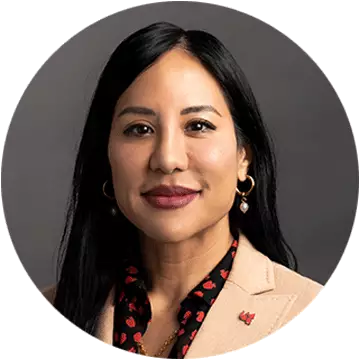Understanding the nursing model vs. the medical model of patient care
This article was updated on December 1, 2023.

Written by Michael Feder

This article was reviewed by Raelene Brooks, Dean, College of Nursing.

The healthcare field offers plenty of career paths, each usually with its own care strategy or patient care model. There are two primary patient care models: the nursing model and the medical model.
The nursing model tends to take a more humanistic approach to the patient’s physical and emotional needs and recommends strategies the patient can implement to live a healthier lifestyle autonomously.
The medical model is patient care centered on a cause-and-effect philosophy. This model focuses on diagnosis and treatment. While the goal of both models is to deliver the best care possible, the execution methods differ.
What is the nursing model of patient care?
Nursing theory is the foundation of how nurses care for their patients. Within nursing theory is the nursing process itself that gives nurses the steps they should follow to care for patients.
This process includes:
- Assessment
- Diagnosis
- Planning
- Implementation
- Evaluation
Nurses often work with other healthcare professionals during each step of the process to treat each patient as best as possible based on all relevant information.
The nurse-patient relationship
Nurses and nurse practitioners who become educated under this model focus on more than just symptoms when addressing a patient’s primary health concern. The nursing model considers the whole person, including mental state and the patient’s support system.
Healthcare workers seek to care for patients so they may remain medically independent. If that is not possible, they help coach the patient’s support system in how to implement a care plan that enables the patient to become as medically independent as possible. Nurses educate their patients on caring for their health to prevent disease and other issues. They use a holistic approach to advise patients on positive lifestyle changes.
What is the medical model of patient care?
The medical model focuses on biomedical approach to disease and illness. Through symptom assessment and patient history, doctors may choose to diagnose a patient within five minutes of meeting. Further diagnostic testing may be done after a conclusion is made to confirm or deny results. However, they may not need to take this step to start a treatment plan. One benefit of this method is quick diagnosis.
In comparison, the nursing model is more investigative and patient-centered than disease-centered — it traces the source of the problem, medical history and other contributing factors, including a patient’s emotional and mental well-being and general lifestyle choices.
The physician-patient relationship
Since physicians must often care for a high volume of patients, it can be more effective for them and their assistants to use the medical model with its quick and effective approach. The model lets physicians address patient concerns quickly, which can be helpful when the patient is in extreme discomfort or pain.
Scope of practice
The scope of practice is defined as the actions a licensed health professional can legally take to treat patients. These are determined by the applicable state nursing and medical boards.
Nursing vs. medical model education
Whether someone is learning under the nursing or medical model of care while training to become a nurse practitioner or physician assistant, education beyond a bachelor’s degree is necessary. Each program has different preparation and education requirements. Therefore, the curricula are very different.
Nurse practitioners may start their education with an associate degree in nursing or a Bachelor of Science in Nursing (BSN) to learn the basics.
In most cases, nurses practice as registered nurses for some years before earning a master’s degree in nursing. The University of Phoenix master’s program is two years long and focuses on the nurse’s desired specialty.
Some specialties that a nurse practitioner may select are pediatrics, women’s health, oncology or family medicine.
How both models can improve patient care
Both models have advantages and disadvantages, but patients often receive the best care when both models are used together. Combining the evidence-based holistic approach with efficiency and research creates the “best of both worlds” for patients. In this way, they work together to address patient emotional and social concerns while offering scientifically based, research-informed solutions to self-care and health concerns.
Earn a degree in nursing at University of Phoenix
If you’re eager to grow your knowledge and skill set within the nursing field, University of Phoenix offers the following degree options:
- RN to Bachelor of Science in Nursing (Competency-Based) — This program is designed for working professionals who have an Associate Degree in Nursing, an unencumbered RN license and one year of professional experience. It encompasses business management, critical thinking, holistic nurse care and more.
- Registered Nurse to Bachelor of Science in Nursing — This program enhances post-licensure nursing skills, covering health administration, business management and more.
- Master of Science in Nursing with a concentration in Nurse Education — This program prepares registered nurses to become leaders in the field of nursing education. Upon completion, some graduates may be eligible to sit for the Nurse Educator Certification Exam.
- Master of Science in Nursing/Family Nurse Practitioner — If you’re interested in becoming a family nurse practitioner, this program will help build your knowledge and skills in as little as 30 months. It includes an intensive, five-day, in-person residency.

ABOUT THE AUTHOR
A graduate of Johns Hopkins University and its Writing Seminars program and winner of the Stephen A. Dixon Literary Prize, Michael Feder brings an eye for detail and a passion for research to every article he writes. His academic and professional background includes experience in marketing, content development, script writing and SEO. Today, he works as a multimedia specialist at University of Phoenix where he covers a variety of topics ranging from healthcare to IT.

ABOUT THE REVIEWER
Dr. Raelene Brooks, dean of the College of Nursing, has been a registered nurse for more than 25 years and practiced extensively in the areas of ICU, trauma and critical care. Her publications include a focus on nursing education, critical care and diversity, equity and inclusion. She is a leader in creating, guiding and launching innovative curriculum.
This article has been vetted by University of Phoenix's editorial advisory committee.
Read more about our editorial process.
Read more articles like this:


